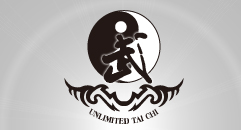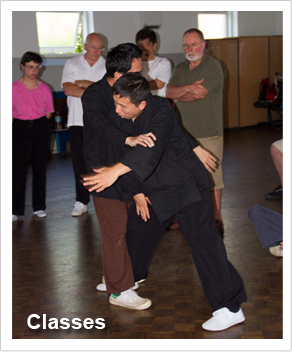HOME >> Questions
Questions
- What is Tai Chi?
- Tai Chi is an internal Chinese martial art practiced for both its defense training and its health benefits. It is based on Chinese Yin and Yang philosophy, for example, Tai Chi features with softness and hardness, fastness and slowness, and opposite movements to remain balance, body alignment and smooth energy flow.
- What is Qi (Chi)?
- In traditional Chinese culture, Qi (Chi) is an active principle forming part of any living thing. Qi is frequently translated as "life energy", "life force", or "energy flow". Qi is the central underlying principle in traditional Chinese medicine and martial arts. Usually the literal translation of "Qi" is "breath" or "air". In Tai Chi, Qi means internal energy.
- What is Yin & Yang?
- In Chinese culture, Yin and Yang represent the two opposite principles in nature. Yin characterizes the feminine or negative nature of things and yang stands for the masculine or positive side. Yin and yang are in pairs, such as the moon and the sun, female and male, dark and bright, cold and hot, passive and active, etc. But yin and yang are not static or just two separated things. The nature of Yin and Yang lies in interchange and interplay of the two components. The alternation of day and night is such an example.
- What are benefits of Tai Chi?
- Tai Chi is one of the ‘soft’ martial arts developed by the ancient Chinese. It is practised increasingly in the West as a means of stress management and exercise. Tai Chi is a series of slow, controlled movements or postures, usually practised outdoors to take advantage of the surrounding energy of nature. Central to Tai Chi is the belief in the life essence, or Qi, that flows through invisible channels or meridians in the body. When the flow of Qi is disrupted, illness is the result. The regular practice of Tai Chi is said to strengthen and improve Qi. According to scientific studies, Tai Chi is an effective healing tool for a range of disorders, particularly chronic (for example, arthritis and heart disease) and stress related conditions.
- What is combat Tai Chi?
- Tai Chi Quan means "ultimate internal martial art". All great Tai Chi masters since classical times have practised Tai Chi as a martial art and all Tai Chi Quan classics have described it as a martial art. Amongst the various dimensions of Tai Chi Quan, those of internal force cultivation and combat application are necessary if you train Tai Chi Quan as a martial art. Without internal force a Tai Chi Quan exponent would have no stamina to last a fight and no striking power to subdue an opponent; without knowing how to apply Tai Chi techniques to combat he would be helpless when attacked.
- What are Tai Chi Jins?
- They are internal powers. They can be seen clearly in Chen Style Tai Chi, fro example, these are eight Jins in it: Peng Jin, Lu Jin, Ji Jin, An Jin, Cai Jin, Lie Jin, Zhou Jin, and Kao Jin. They can be utilised individually or mixed together for a better fighting outcome.
- What is Push Hand?
- Push Hand (Tui Shou) is an exercise performed by two people who are attempting to improve their Tai Chi skills. Practicing the Tai Chi solo form teaches one to remain balanced, focused and relaxed while in motion.
- How can Tai Chi be applied
in Self Defense? - Tai chi was originally developed as a martial art, and it is a lethal weapon to defend against attackers. It includes kicking, punching, grappling, ground fighting, joint locks and pressure points. It is strictly an all-out fighting style, its internal power comes from a very quick expansion of the joints, from the ground, through the hips and then into the strike. Tai chi is not about resisting attacks but about first yielding to the attack. The strategy of Tai Chi is to flow around obstacles, and to redirect the energy of an incoming attack back outward. This is a trademark of Tai Chi Quan, which differentiates it from many other types of martial arts.







